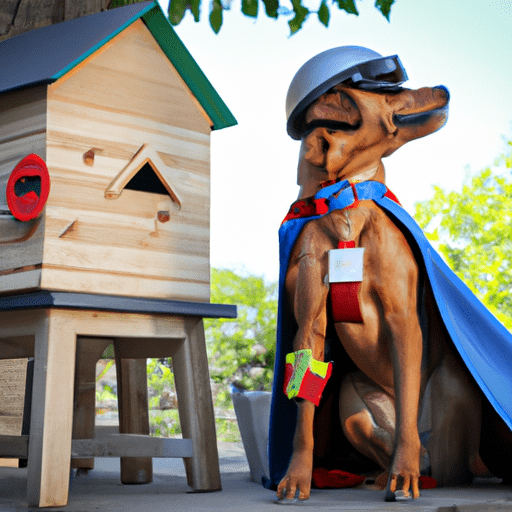Have you ever watched a dog cower in fear or act skittish around new experiences? It can be heartbreaking. But the good news is that there are ways to help build a dog’s confidence. In this comprehensive guide, we will explore how to build your dog’s confidence through a variety of techniques, ranging from basic training to fun games and exercises.
- Understanding Your Dog’s Fear
- Building Confidence Through Training
- Socialization
- Using Toys and Games
- Consistency and Patience
-
Understanding your dog’s fear and triggers
- Simple training techniques to build confidence
- The importance of socialization
- Fun games and toys to boost your dog’s confidence
- The role of consistency and patience in building a dog’s confidence
Understanding Your Dog’s Fear
To address your dog’s fear and lack of confidence, you first need to understand what triggers these responses. Dogs can be fearful of a wide range of things, from loud noises to unfamiliar faces or even certain locations.
One of the best ways to identify these triggers is to observe your dog’s behavior closely. For example, if your dog always gets anxious when you take them to a certain park, it might be the park that’s causing the fear. Similarly, if your dog starts shaking during thunderstorms, it’s very likely they’re afraid of loud noises.
Here’s a helpful article on Understanding Dog Fear and Anxiety from the American Kennel Club that can provide more insight.
Building Confidence Through Training
One of the most effective ways to build your dog’s confidence is through training. Basic obedience training can give your dog a sense of structure and security. When your dog successfully follows a command or does a trick, it boosts their confidence.
Consider using positive reinforcement techniques like treats, praise, or extra playtime whenever your dog does something correctly. This can encourage a positive association with the training and make it more enjoyable for your dog.
Here are some simple training techniques you can try:
- Sit and Stay – These basic commands can help your dog feel more secure and in control.
- Recall Training – This involves teaching your dog to come to you when called.
- Leash Training – This can help your dog feel more comfortable and confident during walks.
You can find more detailed training guides on One Top Dog’s Training section.
Socialization
Socializing your dog is another crucial part of building their confidence. This involves gradually introducing your dog to new environments, people, and other animals.
Start small, maybe with a quiet walk in the park, and slowly increase the level of stimuli. Remember, the goal is not to overwhelm them, but to expose them to different sights, sounds, and smells in a controlled manner.
One effective method of socialization is enrolling your dog in a training class or a doggy daycare, where they can interact with other dogs under supervision. Here’s a link to One Top Dog’s Training Classes for more information.
Using Toys and Games
Toys and games are not just fun for your dog, but they can also be fantastic confidence-building tools. Interactive games and puzzle toys can help your dog feel accomplished and confident.
For instance, you can use a toy like a Kong – fill it with treats and let your dog figure out how to get the treats out. This can enhance your dog’s problem-solving skills and boost their confidence.
You can find a selection of interactive toys to try out with your dog on One Top Dog’s Shop.
Consistency and Patience
Patience and consistency are key when it comes to building your dog’s confidence. It’s important to stick to the training and socialization routines you’ve established.
Be patient and give your dog time to adjust to new situations. Over time, you’ll start to see improvements in their confidence levels.
Frequently Asked Questions
Q: How long does it take to build a dog’s confidence?
A: It varies from dog to dog. Some may show improvements within weeks, while others may take several months.
Q: What should I do if my dog is extremely fearful or anxious?
A: If your dog’s fear or anxiety is severe, it’s best to consult with a professional dog trainer or a veterinarian. They can help identify the cause of the fear and suggest appropriate treatment methods.
In conclusion, building your dog’s confidence involves understanding their fears, training, socialization, and using toys and games. Above all, it requires patience and consistency. Remember, every dog is unique, so it’s crucial to tailor these methods to your dog’s specific needs and personality.



